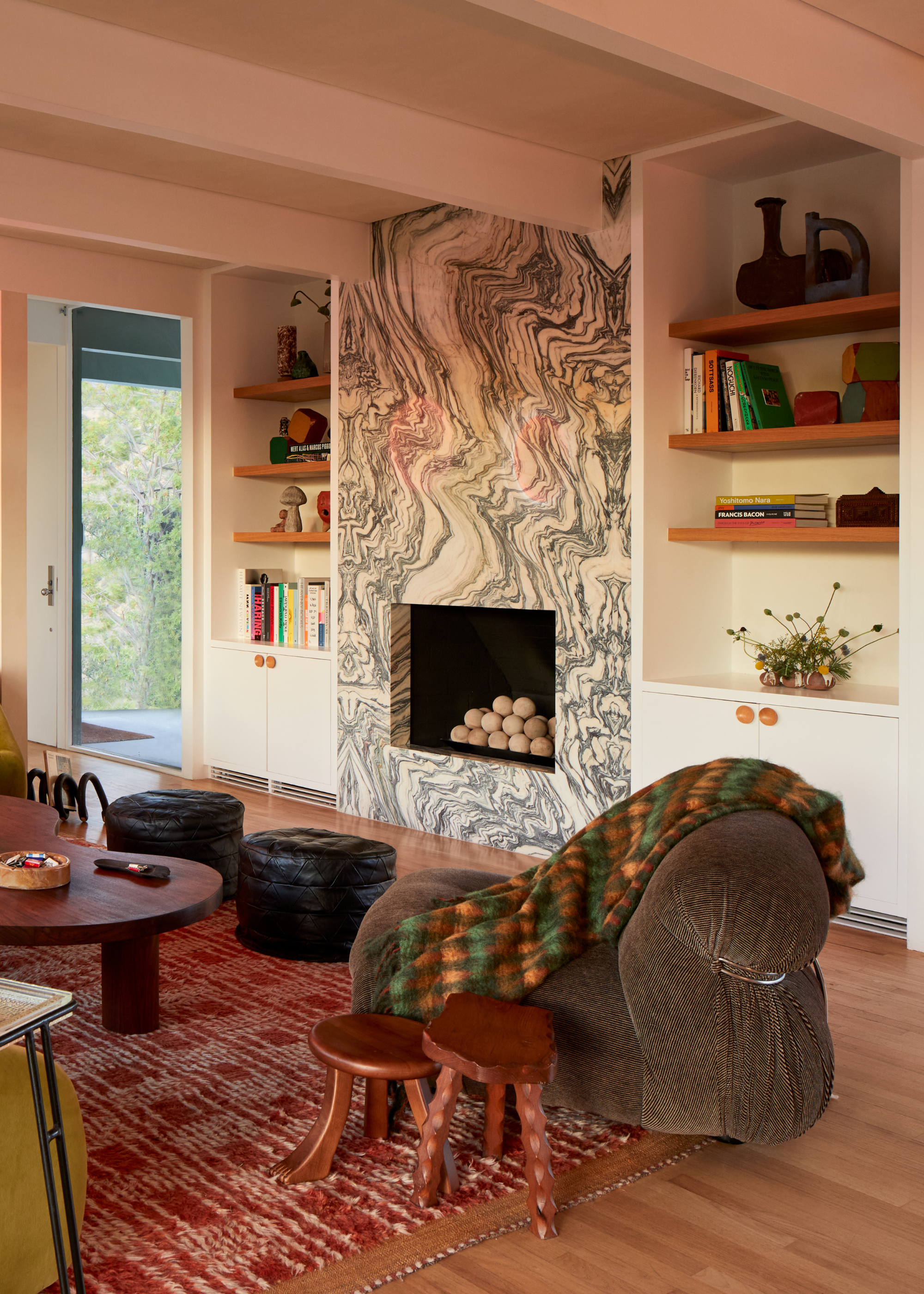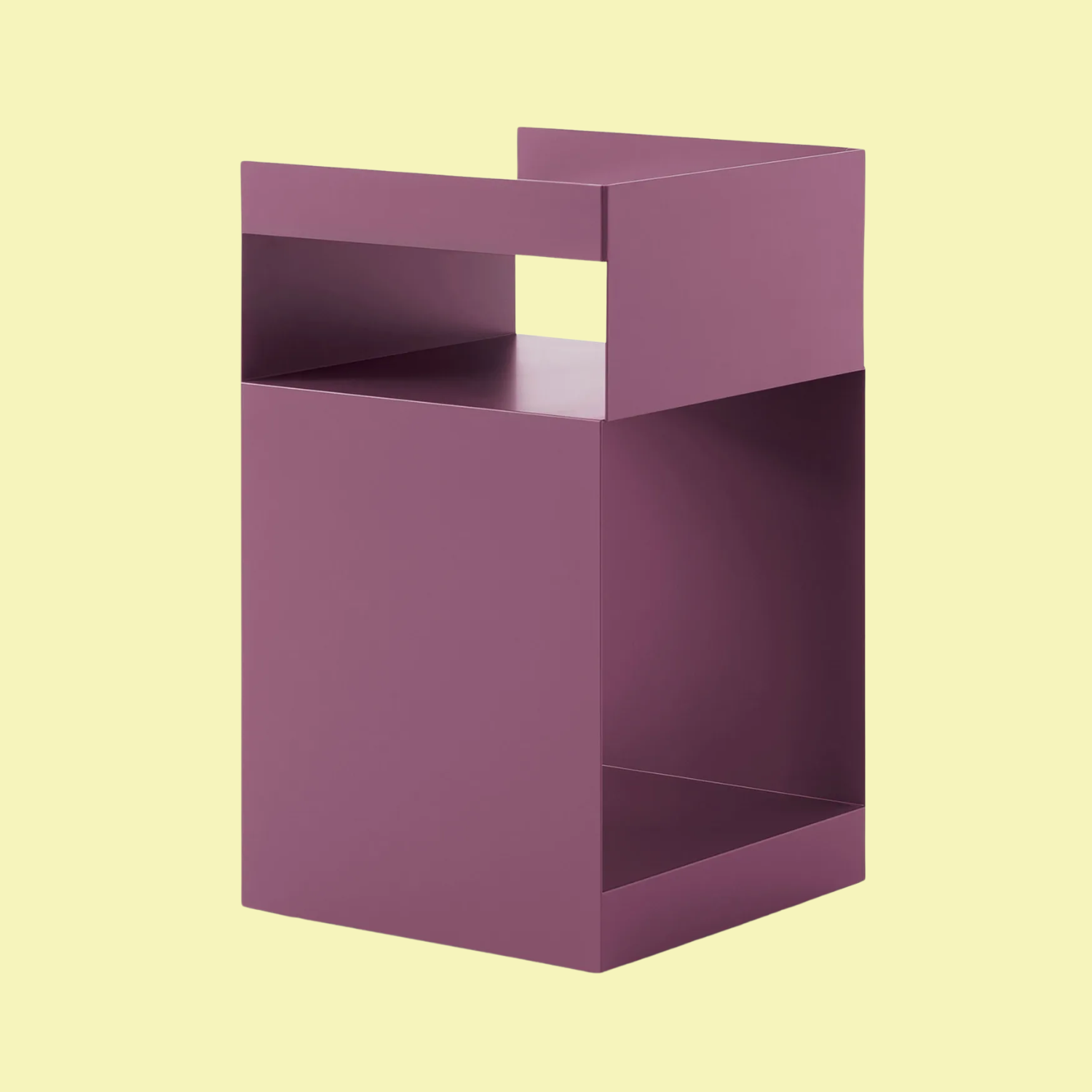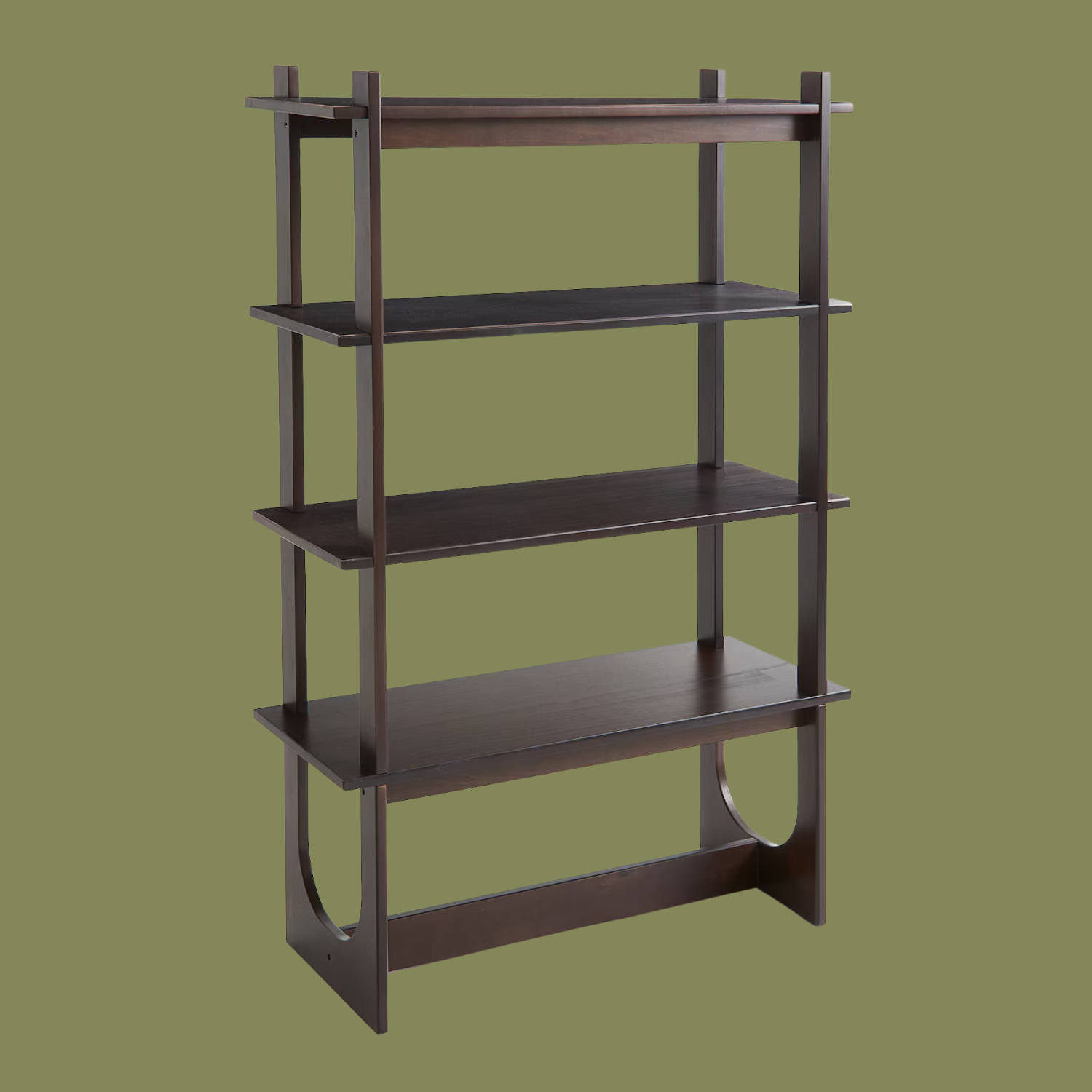Wait, These Might Be the Most Creative, Interesting Ways to Store Your Books — Without Your Home Feeling Like a Stuffy Library
Forget old-school glass book boudoirs. There are so many other ways to show off the contents of your home library, and here's how


Where book storage is concerned, there's a thin line between organizing your collection to look effortlessly curated and haphazardly cluttered. And there's no reason your home library should look boring when there are so many interesting ways to style your books.
There are two key things to consider when planning out storage ideas for books. Firstly, does it work to organize your space? And secondly, does your book organization look like a part of your interior design?
Just like any other item on display, your books should also act as characters, stringing the aesthetic of your home together in a neat and chic manner. So, here are 10 unfailingly impressive book storage ideas that will transform your reading habit into a decorative display.
1. Mixed Vertical and Horizontal Styling

It always pays off to move beyond the basics, even if that means putting in a touch of effort to lightly elevate the look of a space. And with book storage ideas, one of the easiest ways to add some personality to your shelving is by directional mixing your collection.
"The most visually interesting shelves combine both upright books and horizontal stacks," says Kristina Khersonsky, founder and principal designer at STUDIO KEETA. "This creates a rhythm and breaks up the visual weight of large collections, especially when you’re working with oversized art or design books."
Sometimes all you need is a simple spruce. And this technique proves that expertly decorating your bookshelves doesn't have to be that complicated after all.
Kristina is the founder of Los Angeles-based STUDIO KEETA. In her practice, she endeavors to curate the unexpected, breaking free from rules and trends, to create spaces that speak to her clients' taste. To do that, she works closely with color, to ensure that while her spaces feel unique and surprising, they're also completely harmonious and liveable.
2. Concealed Stair Integration

It can feel tricky to cleverly integrate book storage without taking up too much extra space. And if you live in a small home where every bit of real estate counts, then perhaps you need to introduce your books to your staircase.
The Livingetc newsletters are your inside source for what’s shaping interiors now - and what’s next. Discover trend forecasts, smart style ideas, and curated shopping inspiration that brings design to life. Subscribe today and stay ahead of the curve.
"I recommend storing volumes within stair walls or beneath treads," says Philip Thomas Vanderford, founder of Studio Thomas James. "This will transform a utilitarian feature into an architectural statement, blending function with surprise."
While this is a bit of a faux pas in some cultures, it is a great idea to make use of this typically dead space in your home. That is, provided your values align, of course.
As principal and founder of Studio Thomas James, Vanderford has built a portfolio of projects rich in expression, all seemingly understated but that are highly detailed with their own unique emotional intelligence. His studio was a featured designer at Kips Bay Decorator Show House Dallas in 2020 and Kips Bay Decorator Show House Palm Beach in 2023, won HGTV’s Designer of the Year Award in 2021, and has been on D Home’s list of Best Designers for multiple years running.
3. Vintage Bar Cart Styling

While the majority of your books might sit on a shelf somewhere, there are a couple of other solutions for the main reads you have in rotation and even the coffee table books you're keen to show off. Interior designer Elizabeth Ryan tells me that one such idea is using a vintage bar cart.
"For one of our clients who is an avid reader, we needed a shelving solution next to his favorite reading chair. We wanted to avoid clutter and make this storage moment stylish. Instead of a small, basic bookshelf, we repurposed a vintage bar cart."
She explains that bar carts are a charming piece of furniture that just happen to serve an organizational purpose. Not to mention, this is a very practical way to use the library cart method to keep your books in one place and will make switching them out so much easier, too.
Elizabeth Ryan has an degree in interior design from Texas Christian University, and has spent ten years in commercial and luxury residential design, while running Elizabeth Ryan Interiors. She is also NCIDQ and LEED accredited. Her favorite parts of the job include discovering new color combos, giving cool accessories hilarious names, and watching her clients' jaws hit the floor when it all comes together.
4. Color-Coded Shelves

When you think of decorating with books, one of the first ideas that comes to mind might well be a cohesively color-coded bookshelf. It has always been a very popular way to flaunt bookshelf wealth, and this method of styling by gradient will make your space look perfectly put together.
"Smaller books grouped by color instantly become a vibrant, artistic accent in the room," says interior designer Manuella Moreira. "It’s a way to inject personality without needing additional decor."
And if you're worried about color-coded shelves looking a bit cookie-cutter, then the key is to group your shelves in split complementary color mixes, rather than tuning by the rainbow.
Manuella Moreira is the founder of an award-winning namesake design firm that specializes in creating interiors with impact. Her approach focuses on delivering a client-centered experience, where stellar communication, deep functionality, and just the right amount of creative collaboration take priority over surface beauty. After completing her studies at the New York School of Interior Design, she led projects across all phases, transforming homes in New York, California, Connecticut, Florida, and beyond. Throughout her career, she has been honored with multiple awards, including the Rising Star, Gold Spirit Award, and Design Excellence. Her work has been featured in The New York Times, Architectural Digest, Netflix, HGTV, Forbes, Mansion Global, Business Insider, House Beautiful, and Cottages & Gardens.
5. Floating Displays

Clean and cool, floating your shelves is among the best ways to make your storage look less structural and more effortless. And one of my favorite ways to dress them is by stacking and slotting prettily bound books.
"Floating shelves are a beautiful book storage idea for homes that are tight on space," says Manuella. "Plus, it cleverly doubles your books as wall art while freeing up floor space and vanishing visual clutter."
And if you'd rather build up a vignette with bursts of this styling technique, then mini floating shelves should definitely be on your radar.
6. Classic Standing Bookcase

Going back to timeless basics, a well-appreciated way to store your books is by investing in a good old standing bookshelf. Totally mid-century modern and hyper-charming when styled right, Manuella also recommends going this route.
"A standing bookcase designed to show the full front of a book allows you to display them like art," she notes. "This adds color, texture, and personality to a space, while giving special books the spotlight."
And if you want to bring a whiff of contemporary design into the mix, then there are more than enough modern bookshelves to inspire your home.
7. Coffee Table Stacks

As what might be one of my all-time favorite ways to store books, we have coffee table stacks. Part functional and slightly peacocking (in the best way), an artfully collated book clique and a clean coffee table are a match made in design heaven.
"Oversized design or photography books can live stacked on a coffee table," Manuella advises. "Aside from anchoring the space, this fashion of book storage also provides an easy conversation starter."
And as far as coffee table trends go, it really is a fashion. Plus, take my advice, and pile in a couple of novels with groovy covers. And if your paperback's front cover is curling upward from natural wear and tear, then topping it with a light weight like a stunning catch-all or a tin of incense is the solution.
8. Pedestal Placement

Another unique book storage display in one go is via pedestal placement. Admittedly, this isn't the best standalone idea to act as book storage, but it is an undoubtedly stylish add-on to spotlight your hottest book of the month.
"Oversized tomes displayed singularly on plinths or standing platforms celebrate books as objects," says Philip. "And it's perfect for contemporary interior design seeking restraint with impact."
All I'll say is that there's an added joy and confidence that comes with treating your home like a museum of fine mementos, and books are an enchanting way to begin romanticizing your space.
9. Effortless Floor Stacks

While I am a disciplined follower of the floor decluttering method, the one exception to this otherwise golden rule is book stacks. But, don't get me wrong, there's a difference between an unkempt pile of stories is far different from a meticulously planned stack that looks like an afterthought to the untrained eye.
"A casual pile of books on the floor, when done intentionally, can look incredibly chic," says Kristina. "Just remember to keep the book stack properly curated and contained to avoid unnecessary clutter."
And if you don't love the idea of an open stack of books, try sliding them under low-slung benches to avoid an accidental obstacle course in the middle of your space.
10. Architectural Millwork Niches

If you tend to lean towards transitional styles and love to mix your design eras for a melange that feels both futuristic and traditional at the same time, then you'll love this book storage idea.
"Built-in niches framed with architectural millwork transform a library wall into a work of art," says Philip. "The interplay of negative space and form ensures the books themselves feel curated rather than merely stored."
Additionally, having romantic millwork lace its way around your books will make styling your bookcase a breeze. And the best thing to do is to adopt minimalism and let the books and the casing speak for themselves.
FAQs
Should Books Be Stored Flat or Standing?
"The most refined libraries employ both," says Philip. "Vertical arrangements provide order and rhythm, while horizontal stacks lend dimension and prevent oversized volumes from stress. The duality creates movement, balance, and most importantly, visual intrigue."
My philosophy, where this healthy habit is concerned, is that there's always more room to be made on the shelf. And our guide to the best London bookshops will help you stock your home library with colorfully lettered spines of all kinds.

Amiya is a Home Wellness Writer at Livingetc. She recently graduated with a Masters Degree in Magazine Journalism from City, University of London, and has lent her words to beauty, fashion, and health sections of lifestyle publications including Harper’s Bazaar and Women’s Health. Her experience as a research analyst has equipped her with an eye for emerging trends. When she’s off the clock, she can be found reading, listening to music, or overanalyzing her latest Co-Star update.




